Hoi An
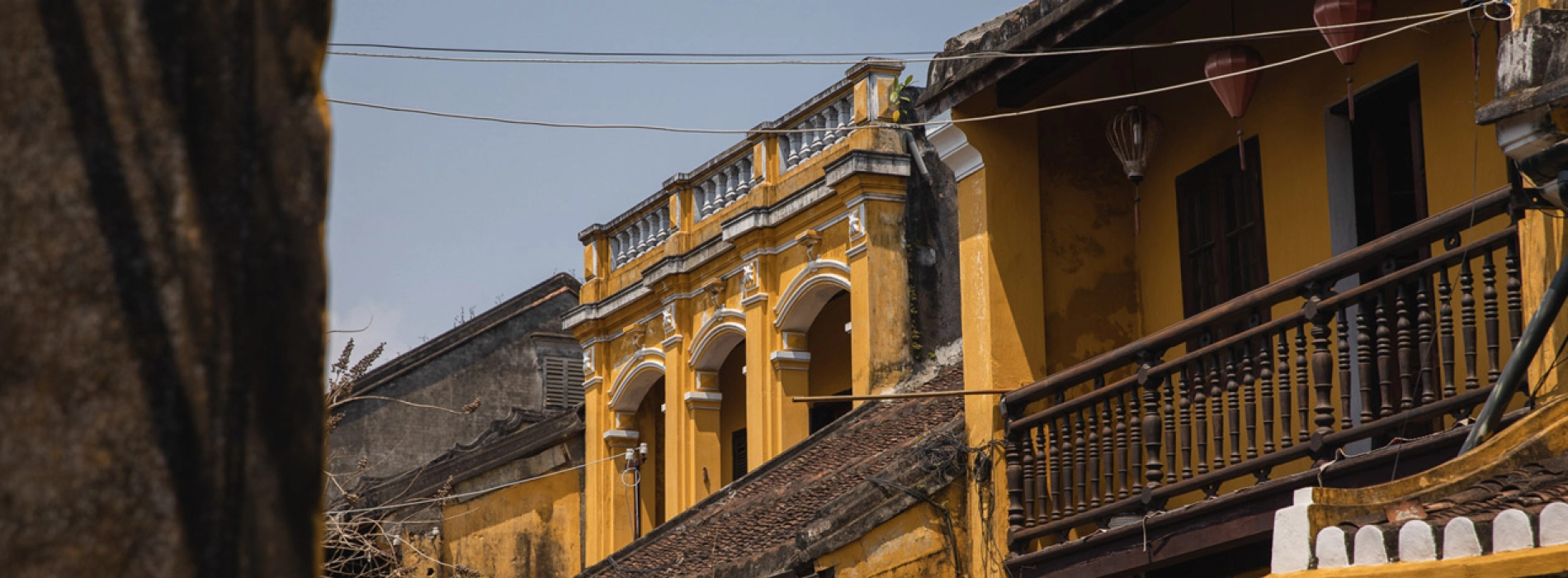
Welcome to Hoi An, a mesmerizing gem nestled along the central coast of Vietnam. This enchanting city beckons travelers with its well-preserved history, cultural heritage, and vibrant atmosphere. As you explore the winding streets of the UNESCO-listed Ancient Town, you'll discover a harmonious blend of architectural influences from Chinese, Japanese, Vietnamese, and European cultures. Hoi An's captivating allure, rooted in centuries of trade and cultural exchange, makes it a beloved destination for both locals and tourists.
Hoi An is a small town on the bank of Thu Bon River in the center of Quang Nam province. It is one of the most famous destinations in the middle of Vietnam, 30km from Da Nanm. The town was a very important trading port of Southeast–East Asia from the 15th to the 19th century, where Chinese from various provinces as well as Japanese, Dutch, and Indians settled. These had a lot of effect on the architecture of Hoi An and made the town become a unique heritage site.
Hoi An's history dates back over two millennia, with evidence of early settlements by the Sa Huynh culture and later the Champa Kingdom. During the 16th and 17th centuries, Hoi An thrived as a prominent trading port, attracting merchants from all over Asia and Europe. This international trade brought a diverse array of architectural styles and cultural influences, creating the unique character that defines Hoi An today. Despite a decline in its port activities, the preservation of its historical buildings has earned Hoi An the prestigious UNESCO World Heritage status, ensuring its rich past is cherished and celebrated.

Hoi An translates as "peace meeting place". In English and other European languages, the town was known historically as “Faifo”. Hoi An has long been a cultural crossroads. Moreover, the diverse cultural influences remain visible today from the culture of the Kingdom of Champa, the Asian culture of Japanese, Chinese, Indian, and Western culture during the trading time from the 16th century.
Originally, Hoi An was a divided town with the Japanese settlement across the Japanese Bridge. The Japanese built the bridge in the 16th century with the unique and special structure. In addition, the town had deeply influenced by the Chinese atmosphere with low, tile-roofed houses and narrow streets. All the houses were built with rare wood, decorated with lacquered boards and panels engraved with Chinese characters. Pillars were also carved with ornamental designs. Two sides of the streets are lined with 2 storey Chinese shops that have been standing there for more than 300 years of history, the shops here is quite colorful with silk, glass, and paper lanterns. And there are some buildings which are very attractive to visit: Quan Cong temple, Phung Hung House, Tan Ky house, Quan Thang house...
Hoi An experiences distinct wet and dry seasons. The dry season, from February to August, offers pleasant temperatures and low humidity, making it an ideal time to explore the city's outdoor attractions. However, during the peak of summer (June to August), temperatures can be hot, with occasional showers. The wet season, from September to January, brings occasional heavy rains and cooler temperatures, contributing to the region's lush greenery. Although it's not the most popular time for tourists, Hoi An's charm remains intact, offering unique experiences amid the rainfall.
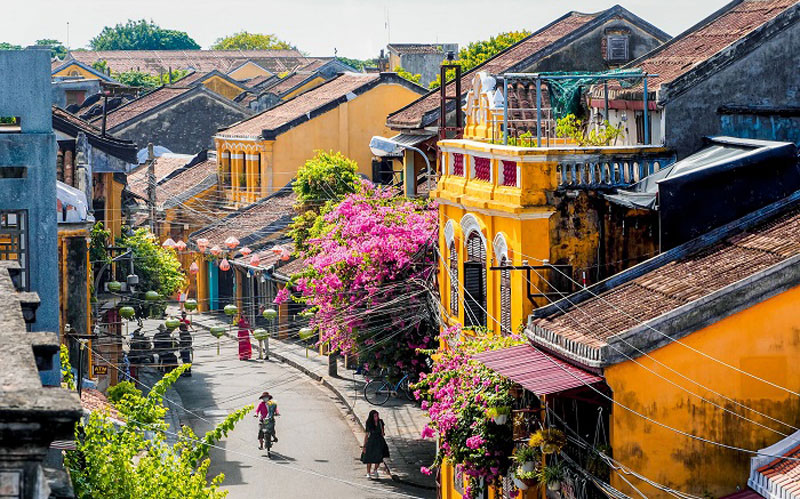
Read more: Top 5 most beautiful beaches in Vietnam
1. Ancient Town (UNESCO World Heritage Site): The Ancient Town of Hoi An is undoubtedly the most famous and iconic attraction in the city. Its narrow streets, ancient buildings, and well-preserved architecture from different cultural influences make it a captivating destination for travelers seeking a glimpse into Vietnam's historical past.
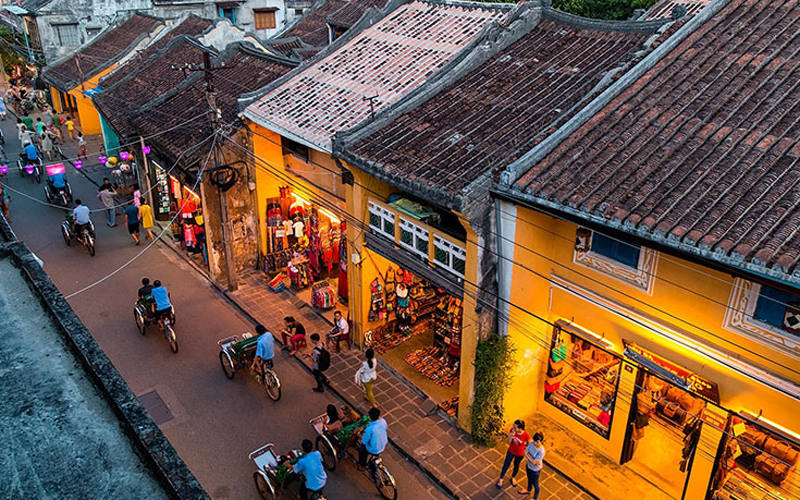
2. Japanese Covered Bridge (Chua Cau): One of Hoi An's most recognizable landmarks, the Japanese Covered Bridge is a symbol of the city's cultural diversity and historical significance. Built-in the 16th century by the Japanese community, this beautifully decorated bridge is a must-visit spot in Hoi An.
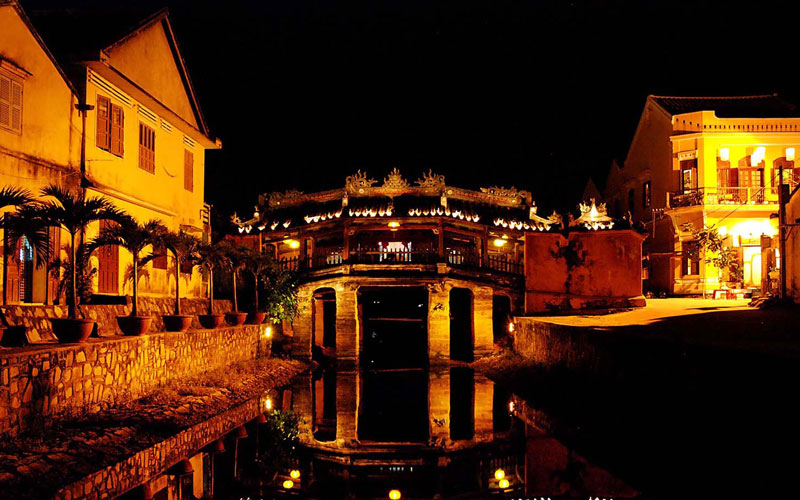
3. Lantern Festival: Hoi An's Lantern Festival is a celebrated event that draws both locals and tourists alike. During the full moon nights, the Ancient Town comes alive with thousands of colorful lanterns, creating a magical and enchanting atmosphere that adds to Hoi An's charm.
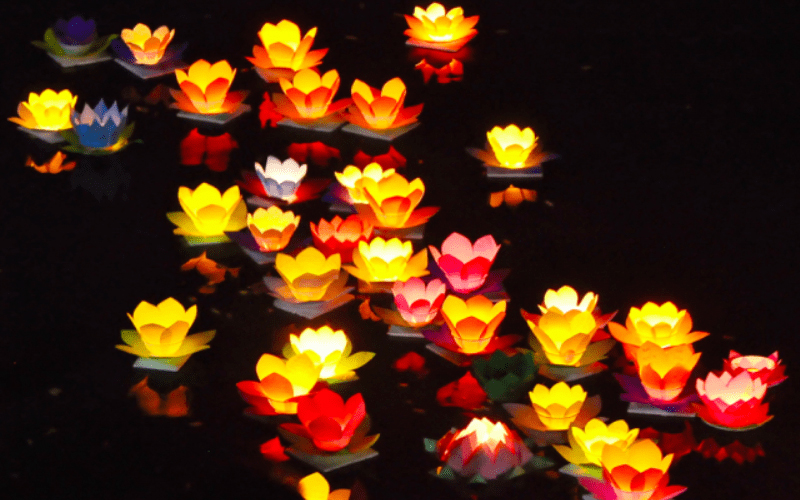
4. Assembly Halls: Hoi An is home to several historic assembly halls, each representing different Chinese communities that once thrived in the city. These assembly halls, such as the Fujian Assembly Hall and the Cantonese Assembly Hall, showcase impressive architecture, elaborate carvings, and ornate decorations.

5. Hoi An Central Market: The bustling Hoi An Central Market is a vibrant hub where locals and visitors come together. Here, you can experience the authentic local culture, sample a wide array of Vietnamese dishes, and find an abundance of fresh produce, spices, and other goods.

Hoi An, a beautiful town in Vietnam, is famous for its delicious and diverse cuisine. The food in Hoi An is influenced by the region's history and geography, which includes a mix of Vietnamese, Chinese, and other culinary traditions. Here are some of the must-try dishes and food experiences in Hoi An:
1. Cao Lau: Cao Lau is Hoi An's signature dish. It consists of thick rice noodles, tender slices of pork, crispy croutons, and fresh herbs, all topped with a flavorful broth. The secret to its unique taste is the water used to make the noodles, which is said to come from a specific well in Hoi An.
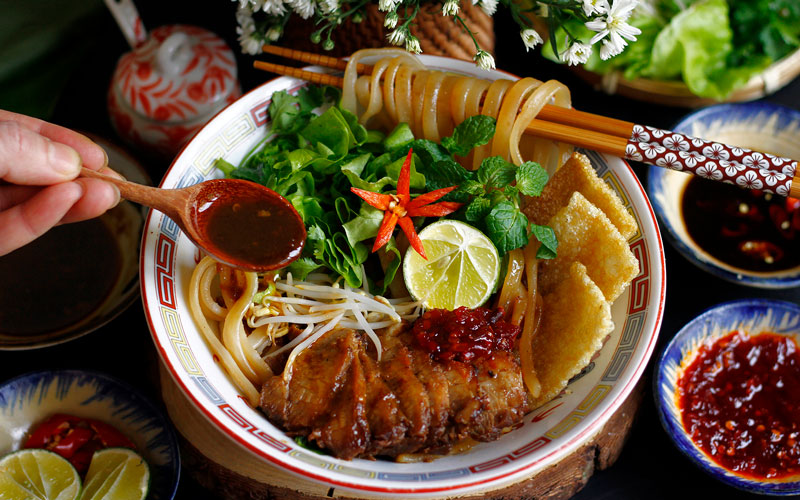
2. White Rose Dumplings (Banh Bao Vac): White Rose Dumplings are delicate shrimp-filled dumplings with a translucent, soft, and slightly chewy wrapper. They are served with a sweet and tangy dipping sauce.

3. Com Ga (Chicken Rice): Hoi An's version of chicken rice features tender, poached chicken served with fragrant rice, fresh herbs, and a side of savory fish sauce. It's a simple but incredibly tasty dish.
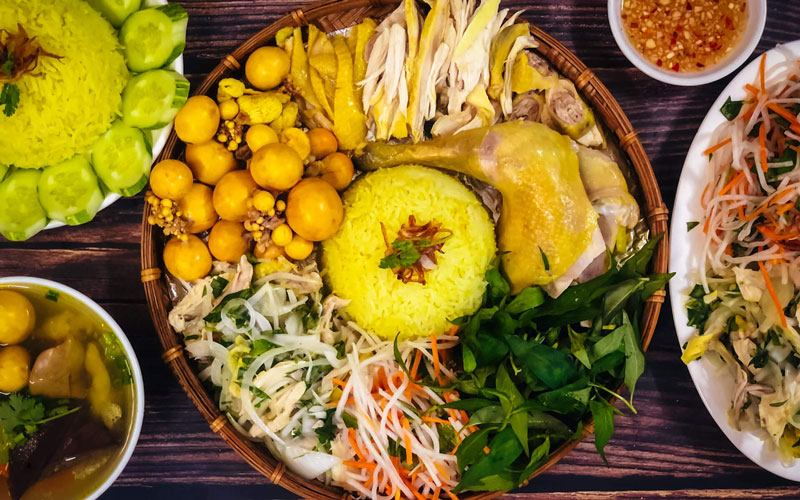
4. Mi Quang: Mi Quang is a dish of turmeric-seasoned noodles served with a variety of ingredients, including shrimp, pork, quail eggs, and fresh herbs. The dish is often garnished with crushed peanuts and crispy rice crackers.
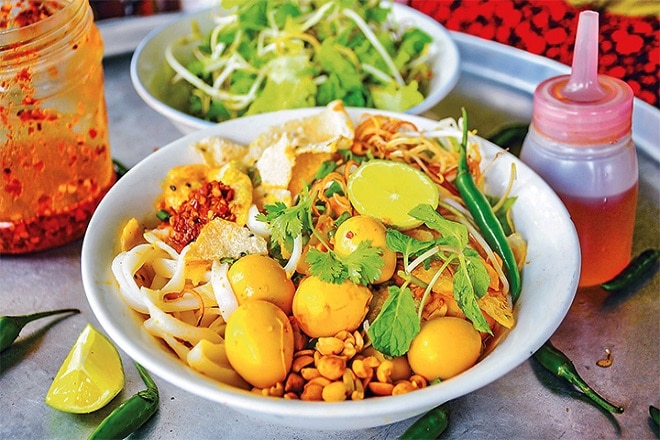
5. Banh Mi: Although the Banh Mi sandwich is popular throughout Vietnam, Hoi An has its own unique spin on this street food classic. The baguette is typically filled with grilled meats, fresh vegetables, herbs, and a variety of condiments.
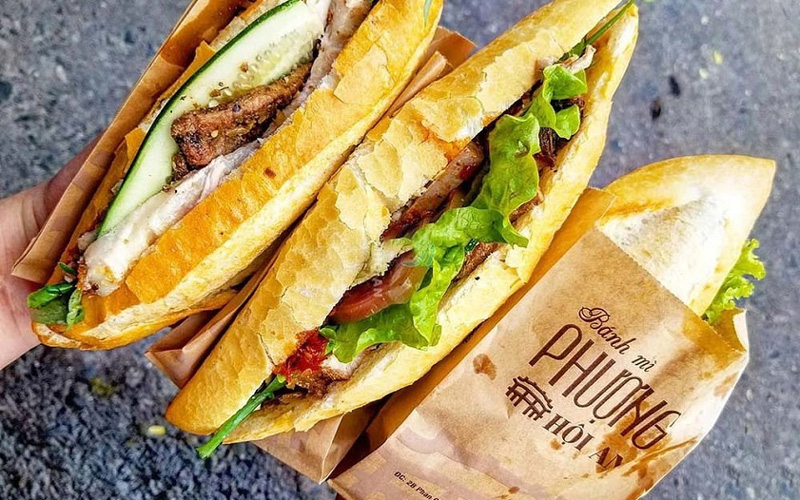
6. Hoi An Wonton (Hoanh Thanh): These wontons are typically filled with a mixture of shrimp and minced pork and served in a clear and flavorful broth. They are often garnished with fried shallots and fresh herbs.
.jpg)
When planning your trip to Hoi An, it's essential to budget for various expenses to ensure a comfortable and enjoyable visit. Here are some of the costs to consider:
1. Cost of Travel: This includes transportation expenses to reach Hoi An, whether it's by plane, train, or bus. Be sure to factor in airfare or ticket prices, as well as any ground transportation costs to get to the town.
2. Entrance Tickets and Sightseeing Tickets: Hoi An has several historical and cultural sites, some of which require entrance fees. For example, you may need to pay for admission to places like the ancient town, historical houses, and museums. These fees can vary, so it's a good idea to check in advance.
3. Tickets for Services: Depending on your interests and the activities you plan to enjoy, you may need to purchase tickets for various services. This could include tickets for entertainment, such as traditional performances, boat rides along the Thu Bon River, or guided cycling tours through the countryside. Prices for these services will differ based on the providers and the duration of the activities.
4. Food Cost: Food is a significant part of the travel budget. Hoi An is renowned for its delicious cuisine, and dining here can range from affordable street food stalls to upscale restaurants. You'll want to budget for meals at local eateries, fine dining establishments, and snacks throughout the day. Exploring the local food scene is an integral part of the Hoi An experience.
5. Accommodation: Don't forget to include the cost of your accommodation. Hoi An offers a wide range of lodging options, including hotels, guesthouses, and homestays. Prices can vary greatly, so choose accommodations that suit your budget and preferences.
6. Transportation within Hoi An: While Hoi An's ancient town is best explored on foot or by bicycle, you might also need to budget for local transportation, such as taxis, cyclos, or motorbike rentals if you plan to venture beyond the town.
7. Shopping and Souvenirs: Hoi An is known for its tailor shops and local handicrafts. If you plan to shop for clothing, tailor-made items, or souvenirs, set aside a budget for these purchases.
8. Miscellaneous Expenses: Be prepared for unexpected expenses, like tips, personal items, and emergencies.
Remember that costs can vary depending on your preferences and travel style. It's a good idea to research prices and plan your budget accordingly to make the most of your visit to Hoi An or you can contact Asia King Travel for support.
This "Vietnam Tour 8 days: A Sweet Honeymoon Vacation" itinerary promises a lot...
Relax on Vietnam's beautiful coast! This Hoi An Cua Dai Tour 5 days takes you to...
Join our Hoi An Trip Half-day: Tra Que Village Cooking Class for a taste of auth...
Embark on our Hoi An Tour Full-day: Exploring Hoi An Ancient Town. You can strol...
Embark on our Hoi An Tour Full-day: Countryside Cycling Excursion! Discover Tra...
This Hoi An Tour 1-day: Hoai River Boat Cruise allows you to immerse yourself in...
Embark on our Cu Lao Cham Tour 1-day: Discovery Cu Lao Cham Island! Explore this...
Embark on our Hoi An Tour Full-day: Night Cuisine Adventure. Discover the charm...
Explore the magnificent coconut forest of Hoi An with this immersive Hoi An Trip...